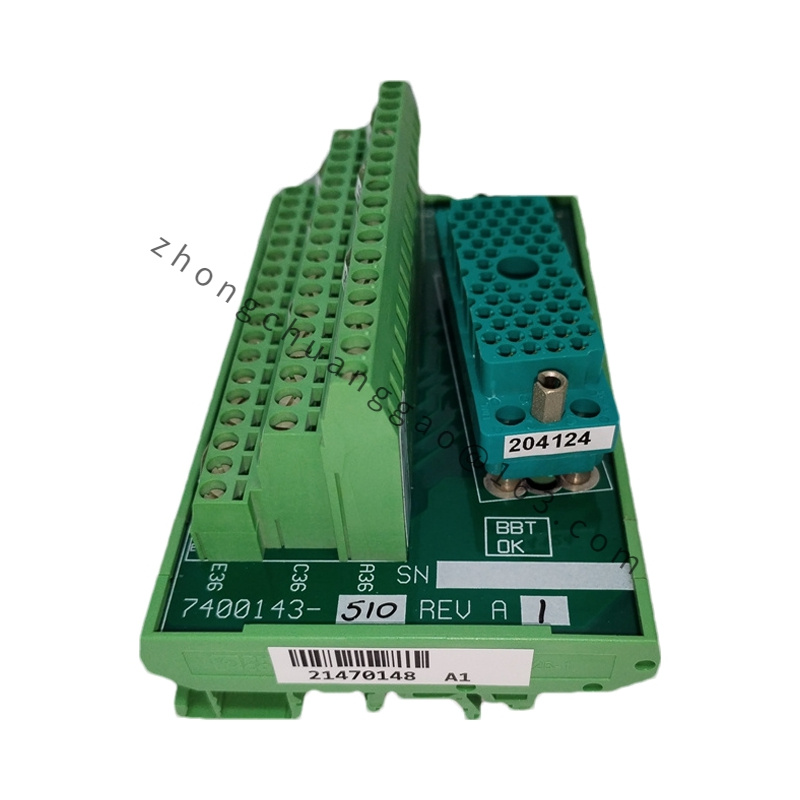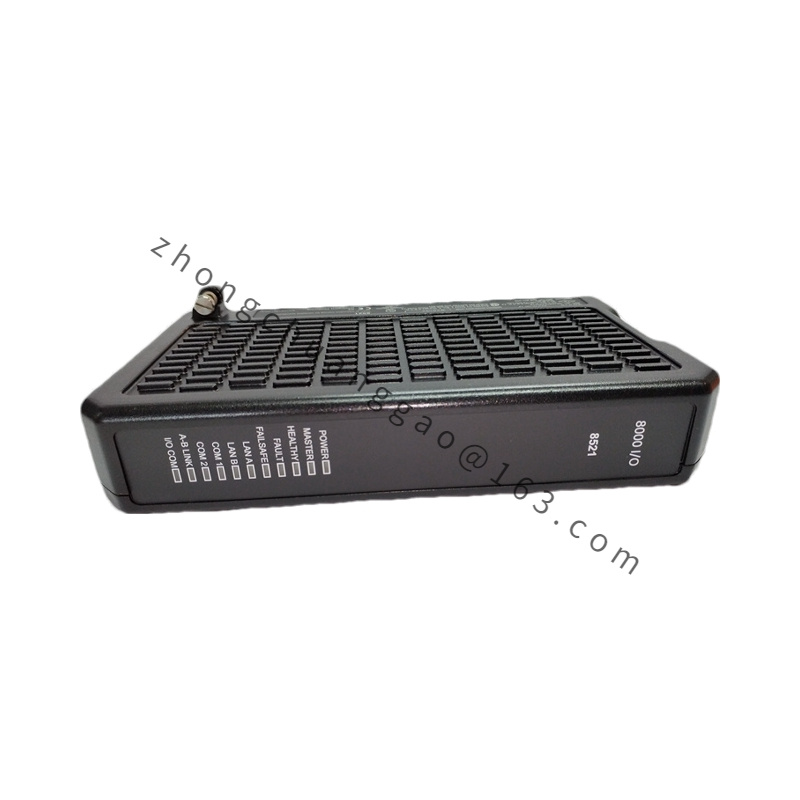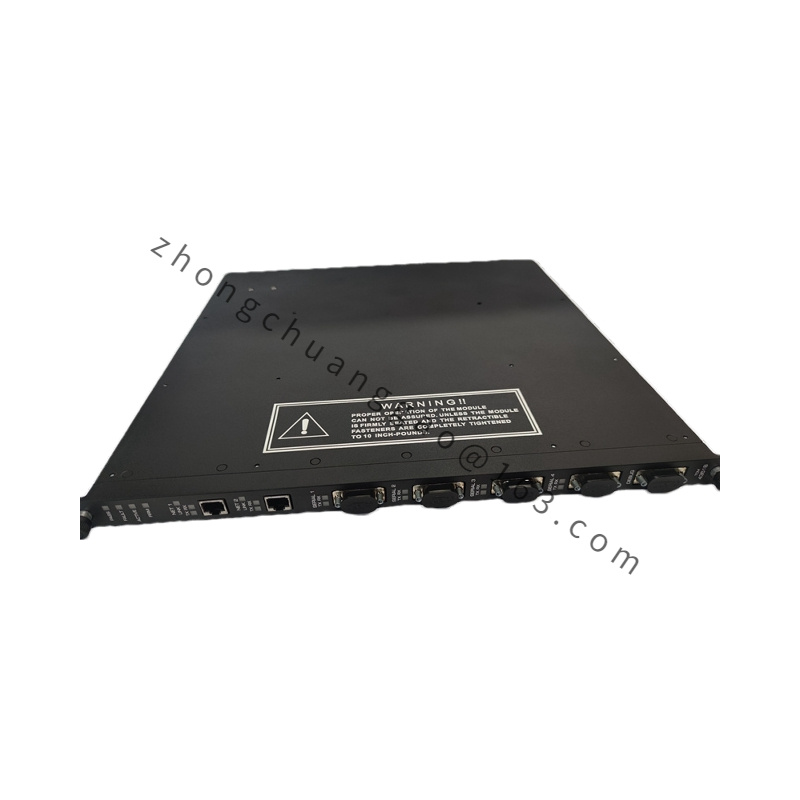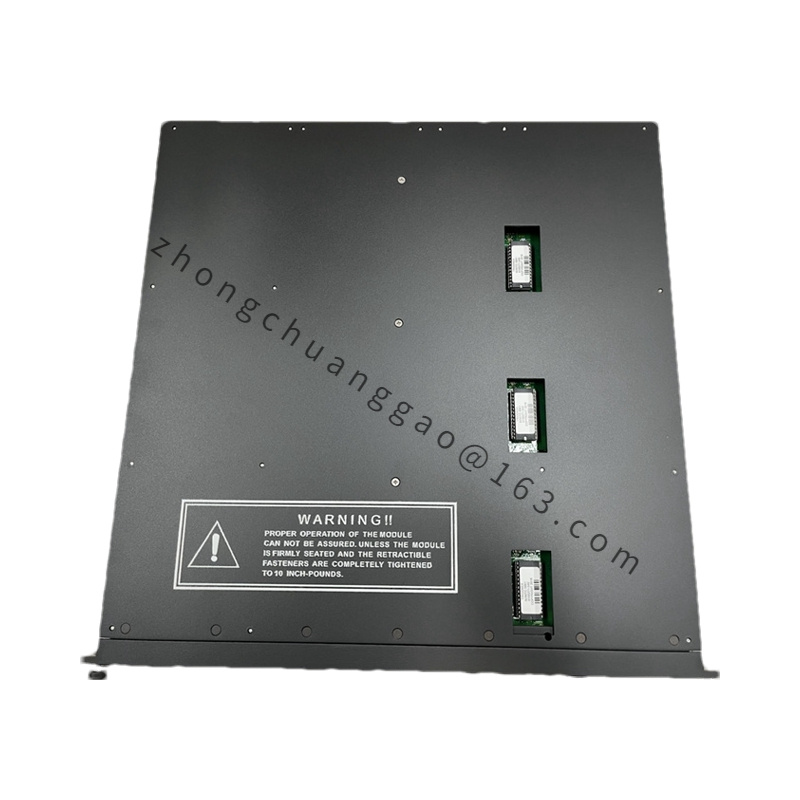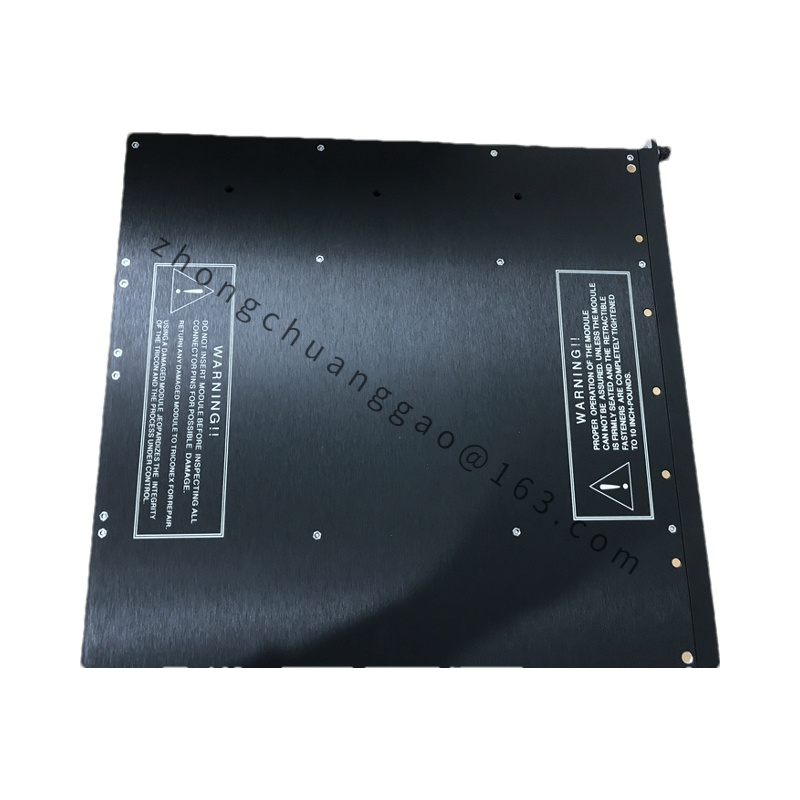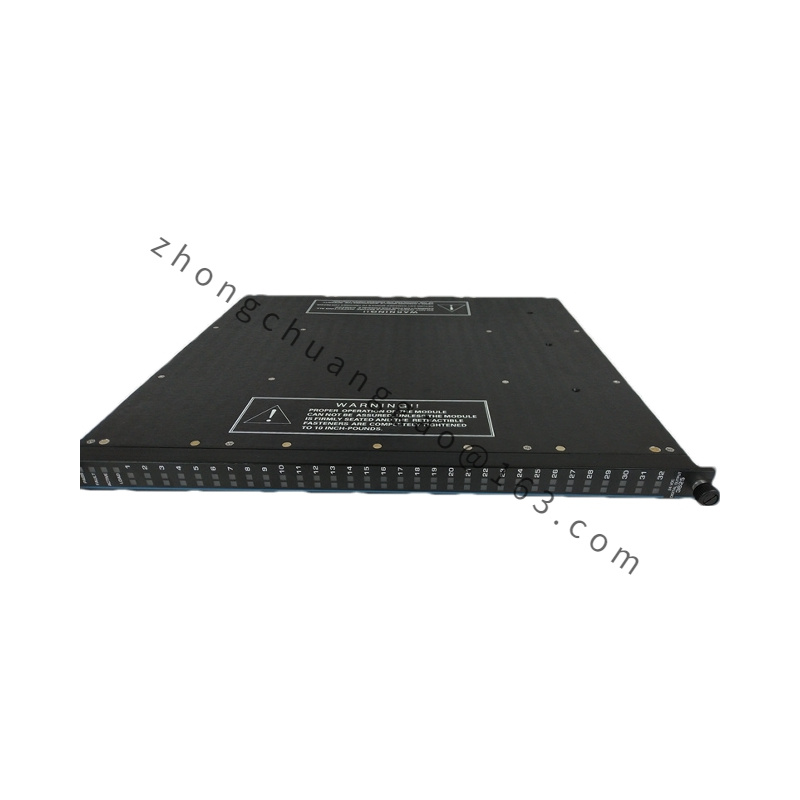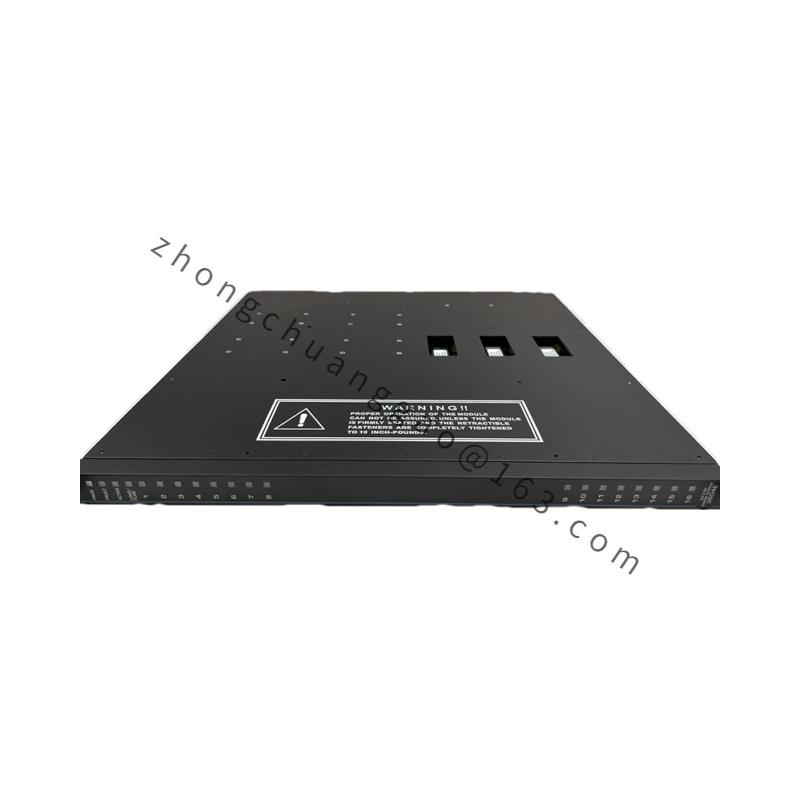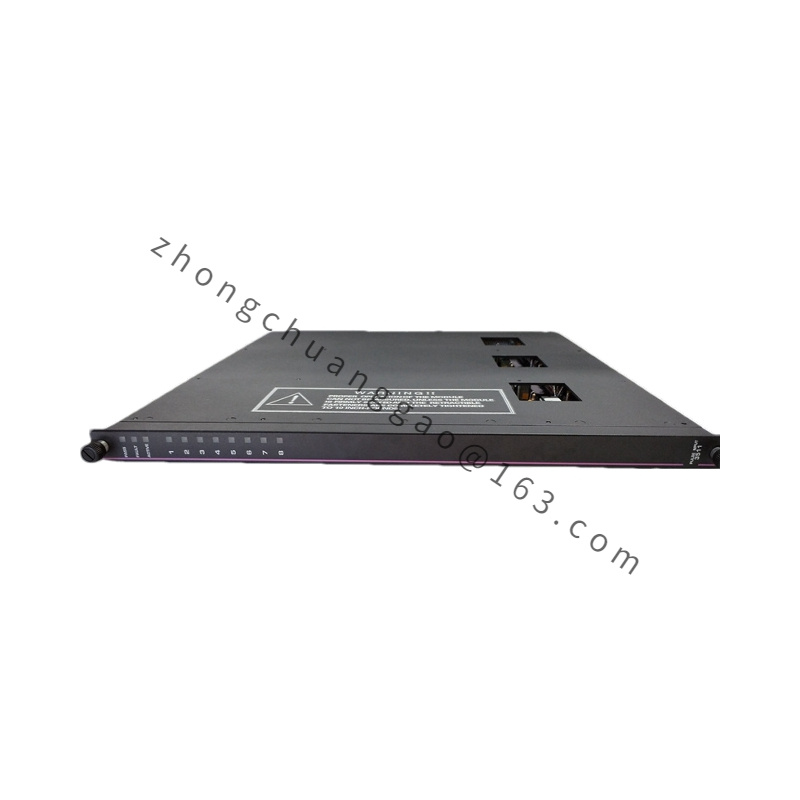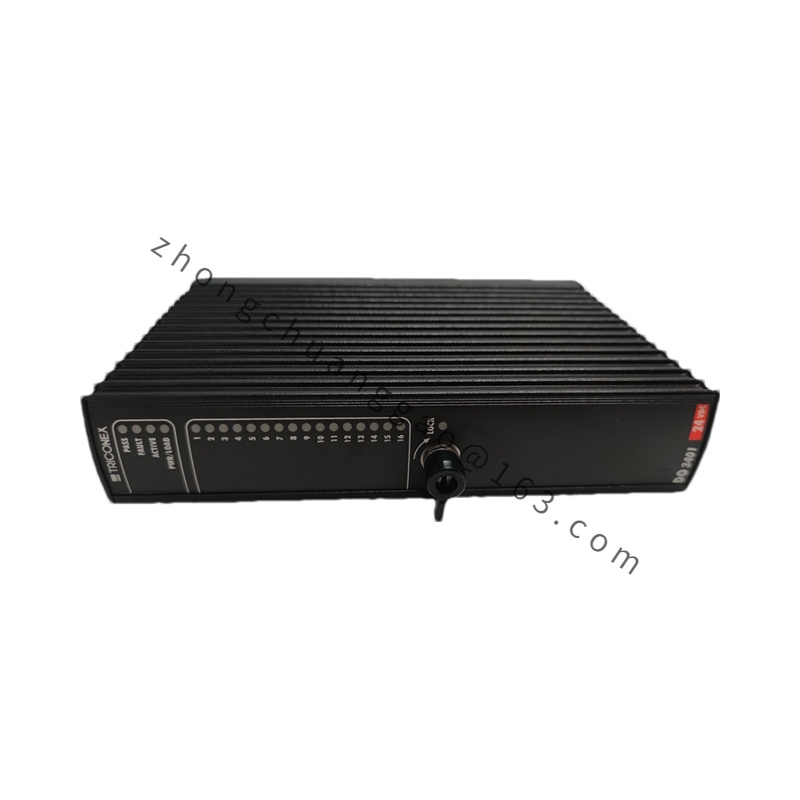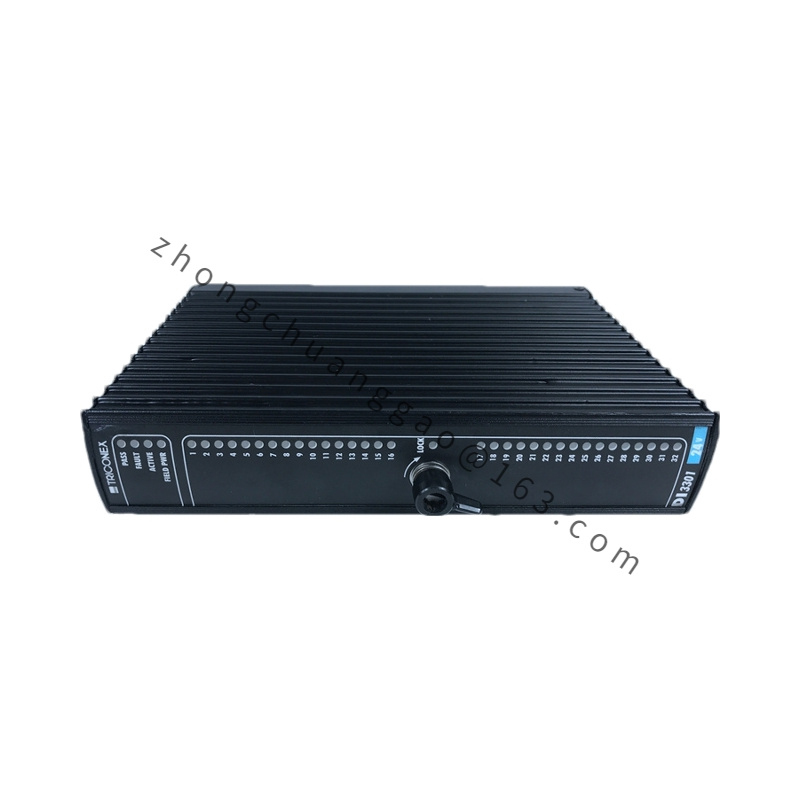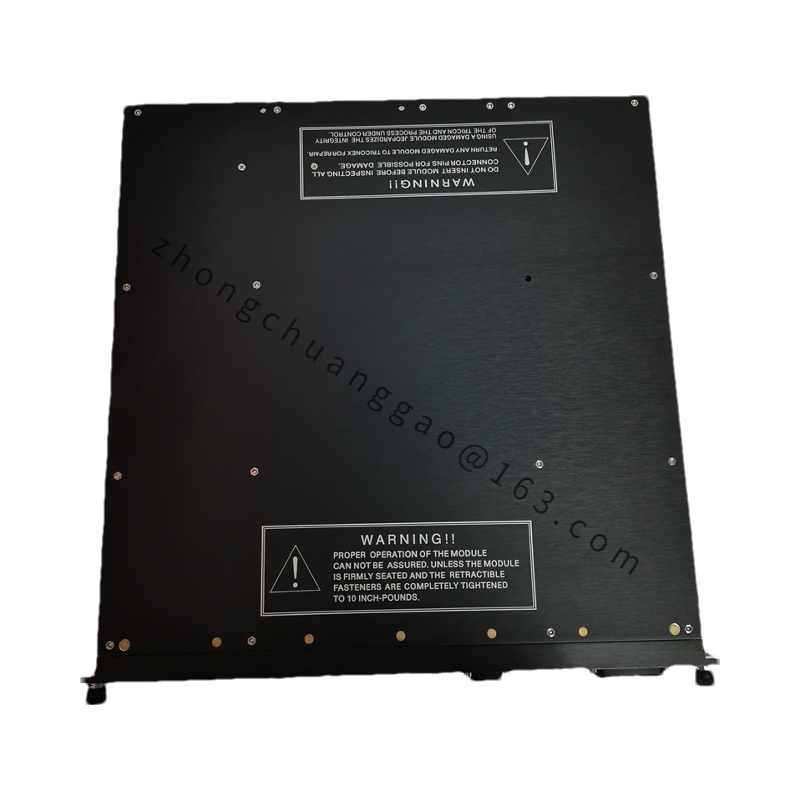Detailed content
Technical Specifications
- Processor: 32-bit with a clock speed of 33MHz, ensuring efficient logical operations and data processing capabilities.
- Memory: Equipped with 1MB of RAM and 4MB of flash memory, capable of storing more programs and data, supporting more complex control logic.
- I/O Interfaces: Provides analog, digital, serial, Ethernet, and other I/O interfaces for easy connection and communication with various sensors and actuators.
- Redundancy: Utilizes a Triple Modular Redundancy (TMR) architecture, with three completely independent processors simultaneously executing the same logic. This redundancy ensures high availability and fault tolerance of the system.
- Communication Protocols: Supports various communication protocols such as Modbus, DNP3, OPC, etc., ensuring interoperability with different devices and systems.
- Serial Ports: 4
- Network Ports: 2
- Port Isolation: 500 VDC
- Protocols: TriStation, Modbus, TCP/IP, ICMP, SNTP, TSAA (supports IP multicast), Trimble GPS, embedded OPC server (for models 4353 and 4354), point-to-point (UDP/IP), point-to-point time synchronization.
- Injection Molded Copper Ethernet Port: 10/100 Mbps (model 4353 only supports 100 Mbps).
- Optical Fiber Ethernet Port: 100 Mbps.
- Serial Port: Each port up to 115.2 Kbps.
- Weight: 3.18 kg.
Functional Characteristics
- High-density input: The module is typically equipped with multiple digital and analog input channels, allowing simultaneous monitoring of multiple signals.
- Multiple input types: Supports various digital and analog input types, including digital switch inputs, analog voltage inputs, analog current inputs, etc., to meet the needs of different applications.
- High resolution and precision: Has high-resolution and high-precision signal acquisition capabilities to ensure accurate reading of input signal states and values.
- Real-time control: Capable of responding in real-time to changes in input signals to ensure high control accuracy and reliability.
- Programmable: Supports programmable functions, allowing users to write control logic and safety rules according to specific application requirements.
- Fault detection and alarm: Equipped with a fault detection mechanism to monitor communication faults and generate alarms and notifications when necessary.
- Compatibility: Compatible with other Triconex products and systems, can be integrated with Tricon and Trident systems to achieve a complete control and safety system.
- Modular design: Makes installation, maintenance, and expansion easier. Users can add or replace modules as needed to meet different safety requirements.
Application Scenarios
- Oil and Gas Industry: Can be used for automation and control of oil and gas production, transportation, and processing processes.
- Chemical Industry: Used to monitor and control chemical reactions, mixing, separation, and transportation processes in chemical factories and process units.
- Power Industry: Can be used to monitor power generation and transmission processes in power plants and power distribution systems.
- Pharmaceutical Industry: Applied in automating drug production processes to ensure production compliance and quality control.
- Food and Beverage Industry: Used to control production lines in food processing and packaging processes.
- Railway and Transportation: Ensures the safe operation of trains and transportation systems.
- Water Treatment: Used to monitor and control water quality, pressure, and flow in water treatment plants.
- Manufacturing: Can be used for automated production processes, machine control, and quality testing in various manufacturing factories.
- Nuclear Industry: Monitors and controls nuclear reactions and auxiliary systems in nuclear power plants and facilities.
- Aerospace: Used to control spacecraft and ground station systems.

